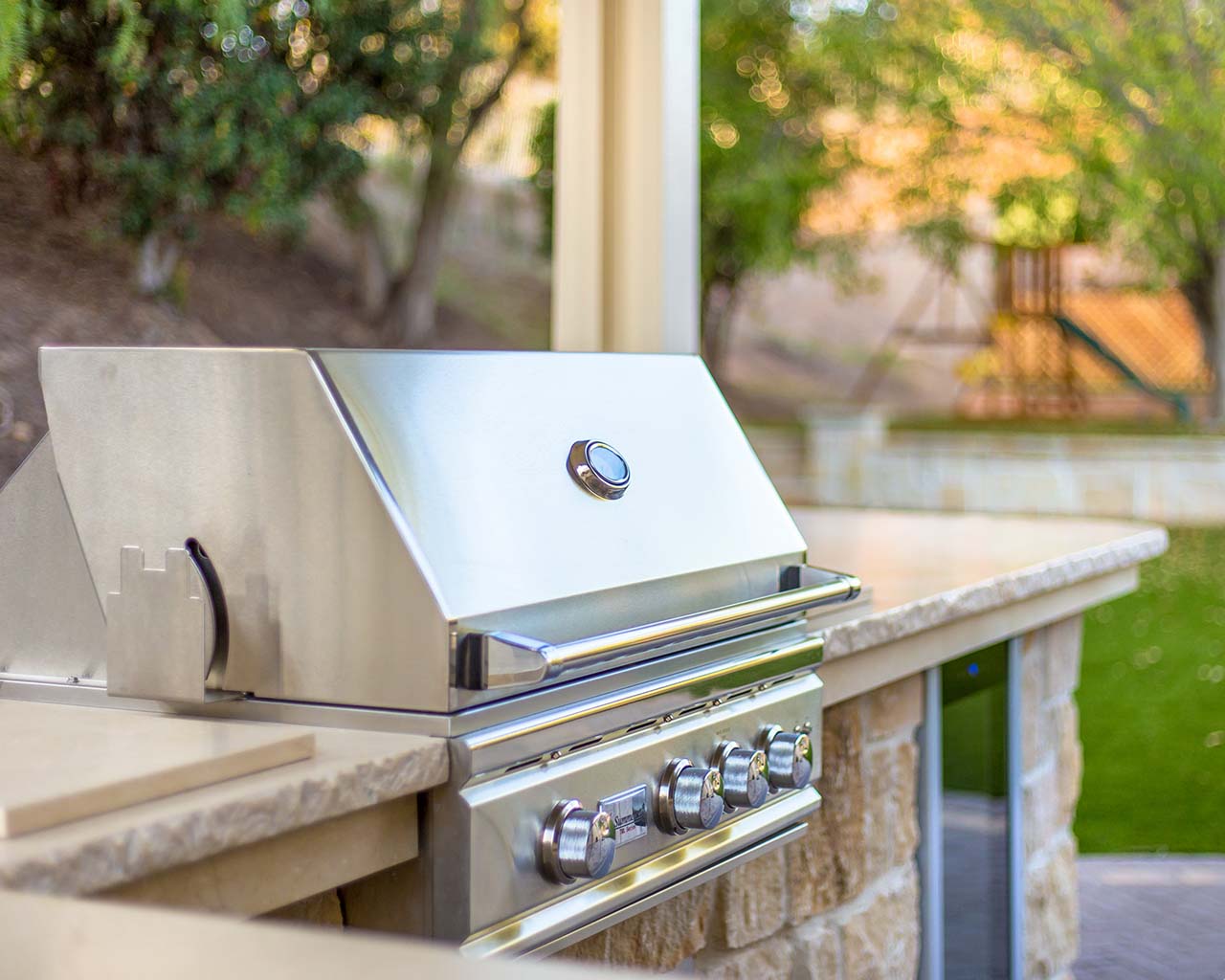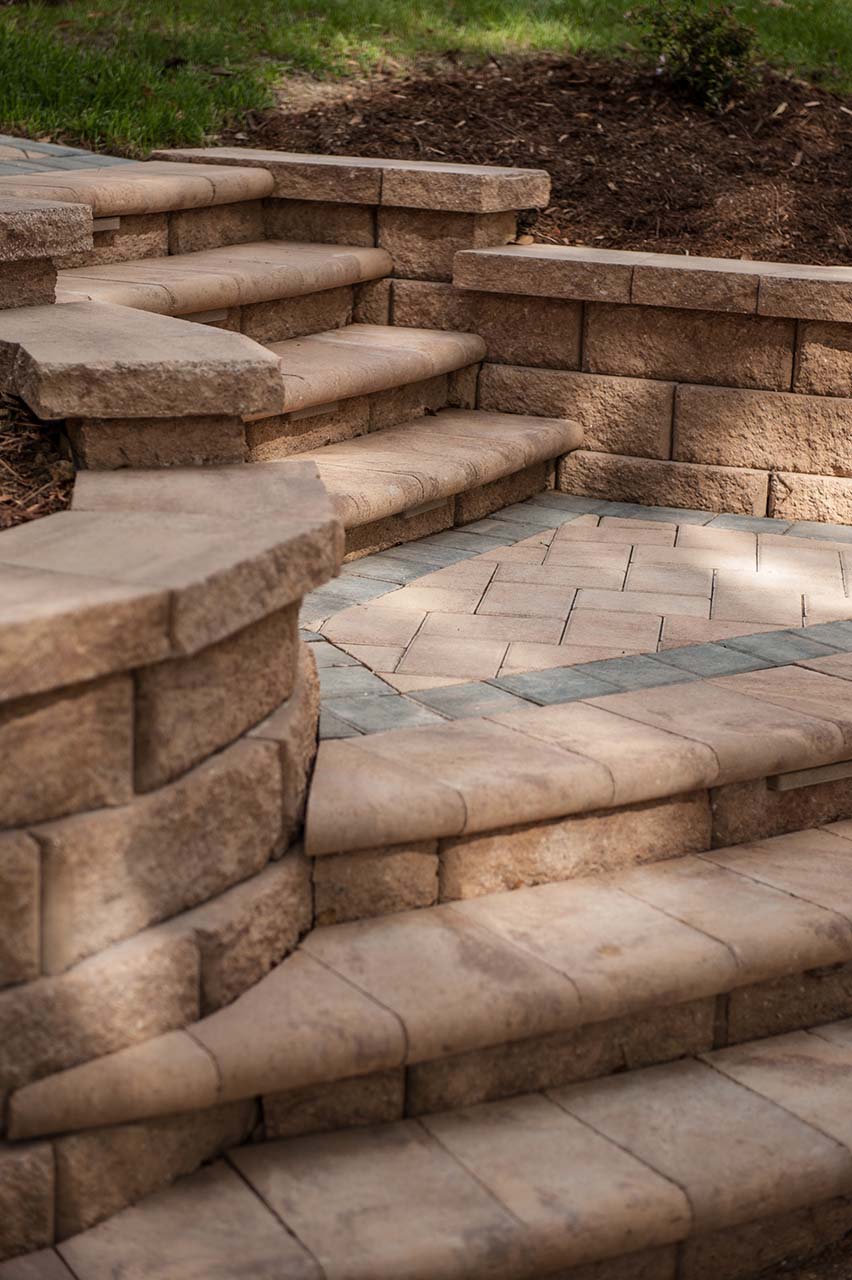A new hardscape installation looks fresh and beautiful; you'd like to keep it that way. What maintenance steps should you take to ensure it remains looking like the day it was finished?

As a home owner, you may be wondering how to perform maintenance on your paver installation long term. While pavers are a durable and low-maintenance option for your home, there are a few things you can do to keep them looking their best. With proper care, your pavers will continue to add beauty and value to your home for many years to come. Here are a few tips on how to maintain your paver installation:
Routinely sweep or blow away any debris such as leaves or dirt that has accumulated on the surface. This will help prevent staining and keep the pavers looking clean. We recommend using a stiff-bristled broom as it helps scrape off any residue without harming the paver surface itself. Do not use a wire brush as this can damage the surface. It's crucial to avoid the build up of organic plant matter in the paver joints. If you neglect this form of maintenance, weeds can accumulate and can cause serious problems down the line.
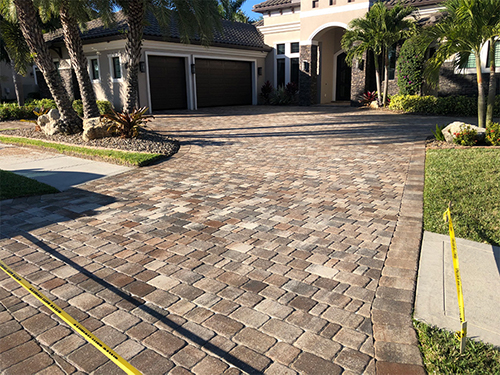
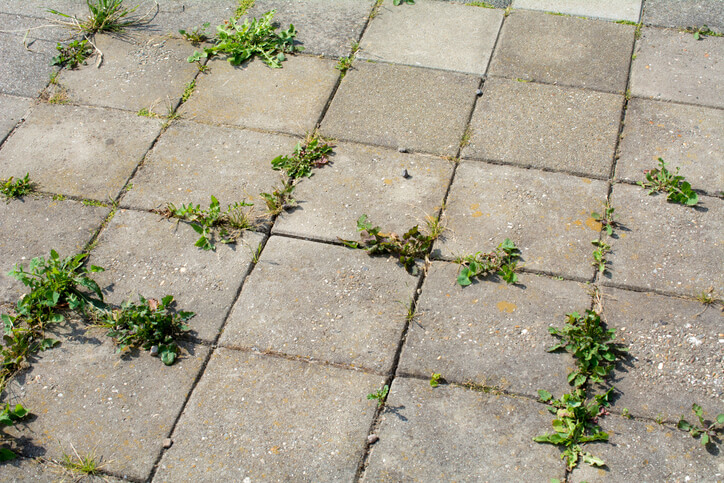
If weeds to begin to grow, remove them asap. The polymeric sand used to bind the pavers together should also double a weed deterrent. Along with sealants, this is one of the best defenses against weed growth and reduces the overall maintenance workload. However, in the case where the polymeric sand isn't enough to stop weeds from growing in a certain area, remove the weeds and any other organic debris from the joints and make sure to keep that area dry.
Occasionally clean the surface of the pavers with a regular hose. Be sure to use a gentle spray setting. Be aware that a high pressure hose can damage the pavers and remove the polymeric sand from the joints. If you do use a power hose, use the lowest setting. Combining water with a gentle degreaser or dish soap can help remove and dirt or grime on the surface. Using bleach or a solution that is too acidic can erode the seal on the pavers and make further maintenance more cumbersome. If you spill wine or oil on the surface, its recommended you soak it up as opposed to scrubbing. Scrubbing can accidentally penetrate the substance further into the hardscape.
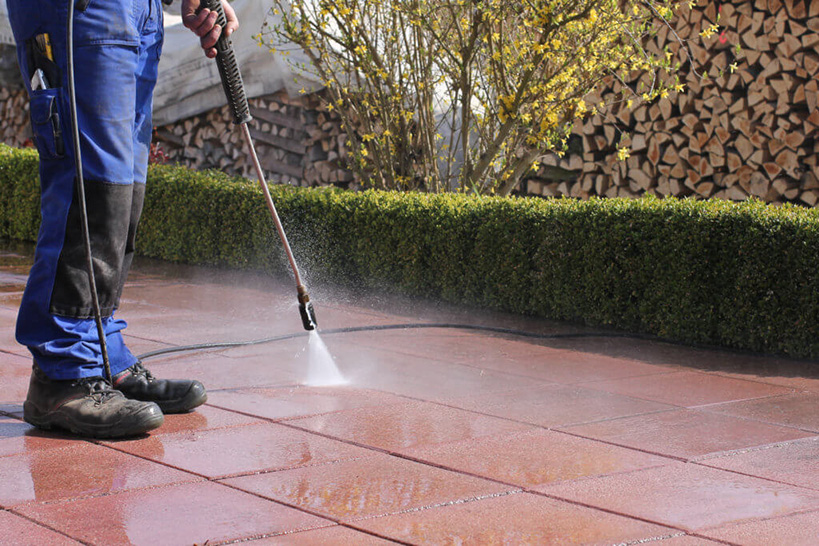
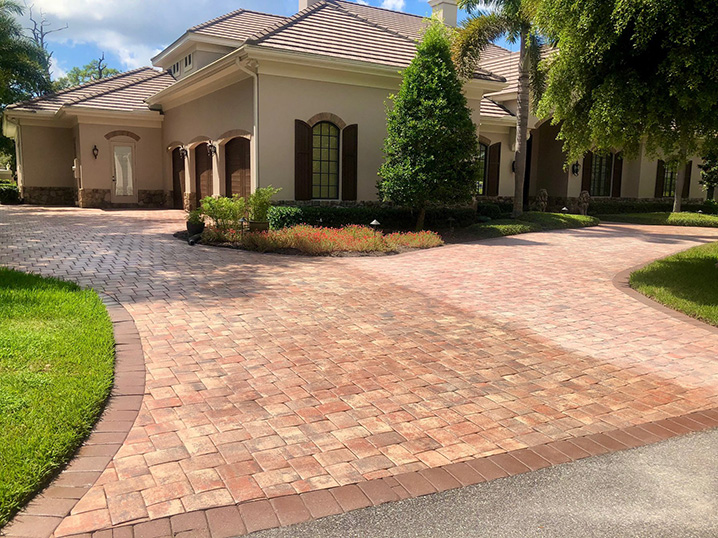
Apply a sealer every 2-3 years to keep the installation in the best condition. This prevents the pavers from staining or fading. The sealant also adds to the binding strength of the polymeric sand which prevents the pavers from dislodging. If you are unsure which sealant you should apply, we'll help you choose a sealer that's best for your hardscape installation. We do recommend waiting three months before the first sealant is applied. This avoids an accidental sealing of effloresce, which is a white powdery substance that naturally occurs in pavers. This occurs due to the release of calcium hydroxide, which is totally normal to see in the first few weeks of a paver project. When you're ready, simply clean off the pavers using the aforementioned mentioned tips before the first sealing.
Inspect the installation regularly for any damage or signs of wear and tear. Should you follow the above steps, your project will last for years to come, but if you do notice anything that needs to be addressed, contact us as soon as possible. Ignoring small issues can lead to bigger and more expensive problems down the road. By following these simple tips, you can ensure that your paver installation remains in excellent condition for years to come. For more information on how to maintain your hardscape installation, please contact us today.
